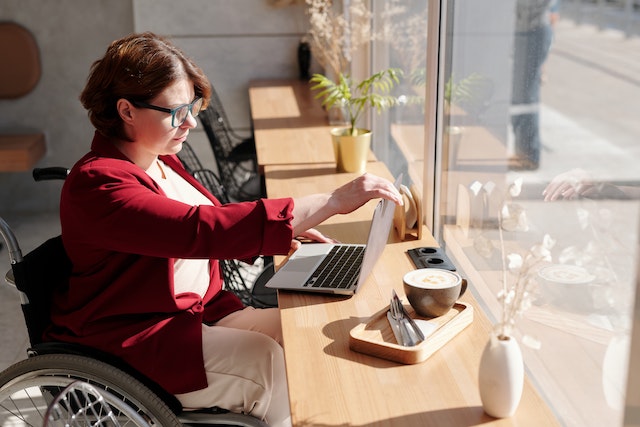
Inclusivity and ensuring everyone who needs to use your business can is vital for companies in 2023. Ensuring you have able business premises and means to accommodate people with different abilities can give everyone who needs your support the best chance of accessing it. Inaccessibility is losing UK businesses around £2 billion a month as 40% of UK households are or have someone who is disabled and unable to use their services.
The post looks into how you can make your business available to everyone by creating essential adaptations and inclusions.
Braille
More than 2 million people in the UK are registered as blind or have limited sight. By being able to accommodate the needs of those without sight or little sight, you can improve their experience and allow you to support their needs when possible. Using braille around a store on labels, doors, walls, exits etc. or clearing aisles and pathways to reduce obstacles is a great place to start.
Lifts
If your business is split over different levels or not based on the ground floor, how do people in wheelchairs or with mobility issues access you? Stairs aren’t appropriate for everyone and can be a massive hurdle for much of the Uk public. Having lifts can ensure people can safely move around your premises, and handrails can facilitate more effortless movement down long hallways, such as having seating areas for people to rest when needed.
Changing Rooms
Whilst accessible toilet facilities are always welcome, many places must go beyond this and install changing places for complete inclusivity. Changing places rooms have hoists, open spaces for the movement of wheelchairs and facilities that enable wheelchair users to be cleaned and toileted with respect and dignity when out and about. Not having the appropriate equipment can be incredibly isolating for people who require these and their carers. Currently, only 1,300 changing places are installed around the UK, meaning many people are left cut off from accessing much of the country on days out.
Mobility Aids
Mobility aids can come in many different forms. From the benches and handrails mentioned above to installing ramps, automatic lifting devices, high-low tables and chairs for people who can’t use regular height equipment, automatic doors, stair lifts, and so on. It all depends on your business type, the consumers you expect to access it, your employee’s needs, and how you can physically make the changes and adapt. It can be worth working with inclusivity campaigners to enlighten you about the changes you can make.
Use Images
Assuming everyone can read and communicate easily can be a massive mistake, especially in hospitality and retail settings. Having only written directions or listing on menus can be challenging for people who need different communication forms. Images can allow people to show you directly what they want or need without having to articulate it verbally or read a menu, significantly visually impaired users.
Train Employees and Yourself
One of the most significant barriers to accessibility is not having staff or business owners who are compassionate to the needs of others and understand what it means to treat everyone with care and respect regardless of their needs. Ensure your staff know your accommodations and policies and can respectfully assist people when required.
Being accessible cannot only improve the reputation of your company but open you up to a section of the public who might not otherwise be able to use your services.
